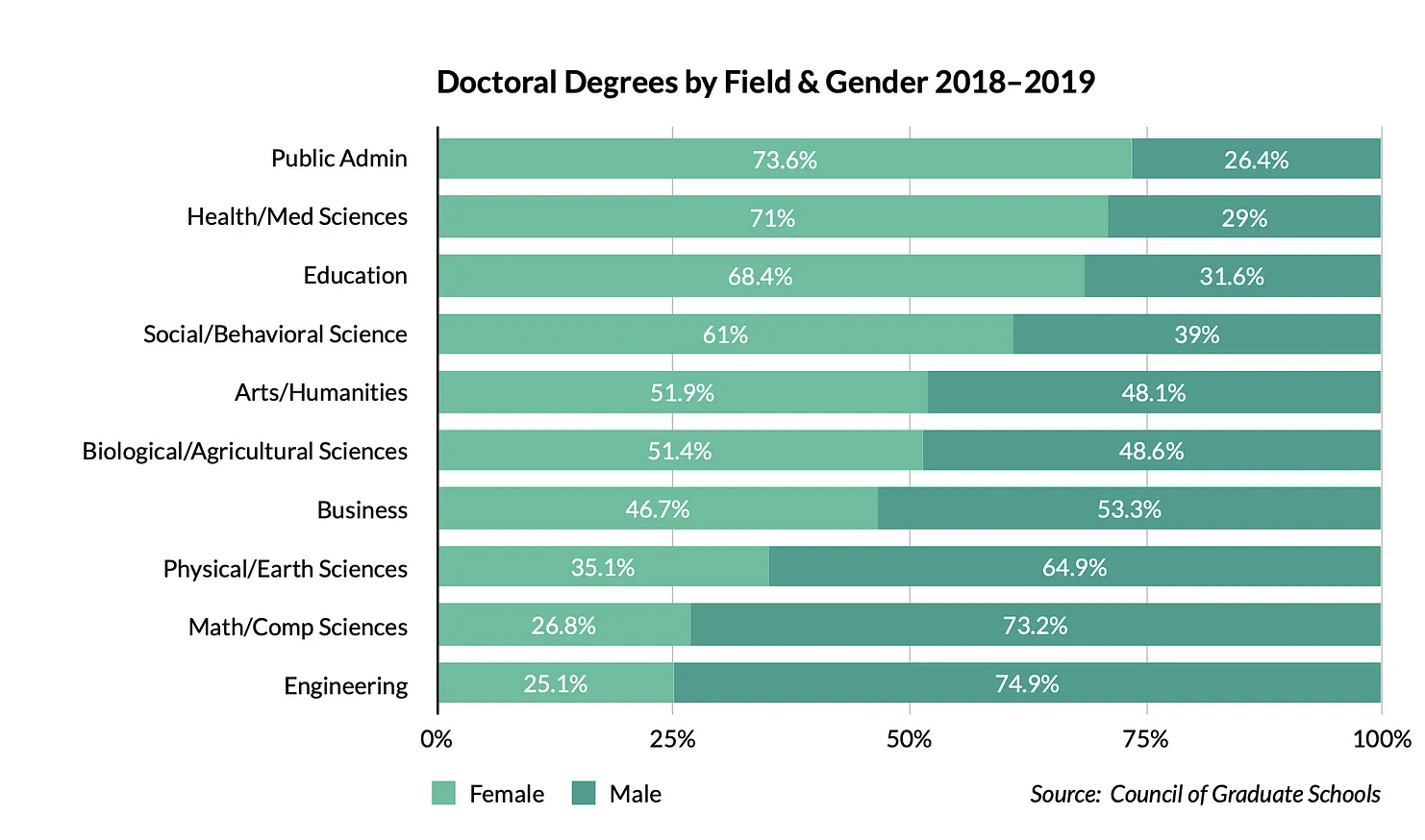The Lack of Attention to Reverse Asymmetries
In 2019, after writing 214 articles, Michael Shermer was booted out of Scientific American because the "science" magazine increasingly became scientific. One of the problems he noticed is that the editors were quick to criticize group disparities only when they ran in the woke direction. An excerpt from "Scientific American Goes Woke: A case study in how identity politics poisons science":
[R]everse asymmetries never warrant explanations of reverse biases. To wit, this same study reported that “women earned 57%, 60% and 52% of all Bachelor’s, Master’s and Doctoral degrees respectively in the U.S. in 2013-14,” but proposed no reverse biases against men to account for such imbalances. Neither did a 2019 Council of Graduate Schools study that found for the 11th year in a row women earned a majority of doctoral degrees awarded at US universities (41,943 vs. 37,365, or 52.9% vs. 47.1%). Our attention is drawn to the lower percentages of female doctorates in engineering (25.1%), mathematics and computer sciences (26.8%), physical and earth sciences (35.1%), and business (46.7%), followed by discussions of systemic bias, but no such structural issues are on offer for the lower percentages of male doctorates in public administration (26.4%), health and medical sciences (29%), education (31.6%), social and behavioral sciences (39%), arts and humanities (48.1%), and biological sciences (48.6%). When the data is presented in a bar graph rank ordered from highest to lowest percentages for females earning doctorates (below), the claim that the fields in which women earn lower percentages than men can only be explained by misogyny and bias is gainsaid by the top bars where the valance is reversed, unless we are to believe that only in those bottom fields are faculty and administrators still bigoted against women whereas those in the top fields are enlightened.

About four years ago, Jordan Peterson illustrated another asymmetry, one for which many people only see one side of the equation. That's the confirmation bias at work, once again.
The question addressed in this video is whether western culture is a "patriarchy." Here's the video (I cannot figure out the name of the woman not the right). I made the following transcript:
Interviewer: I mean, that's the that's my idea of the patriarchy, which is a system of male dominance of society.
Jordan Peterson: But that's not my sense of the patriarchy.
Interviewer: So what's yours?
Jordan Peterson: Well, in what sense is our society male dominated?
Interviewer: The fact that the vast majority of wealth is owned by men, the vast majority of capital and is owned by men, women do more unpaid labor
Jordan Peterson: A tiny proportion of men. And a huge proportion of people who are seriously disaffected are men. Most people in prison are men. Who most people who are on the street are men. Most victims of violent crime are men. Most people commit suicide and men. Most people who die in wars are men. People who do worse in school are men. It's like, where's the dominance here precisely, what you're doing is you're taking a tiny substrata of hyper-successful men and using that to represent the entire structure of the Western society. There's nothing about that that's vaguely appropriate.

